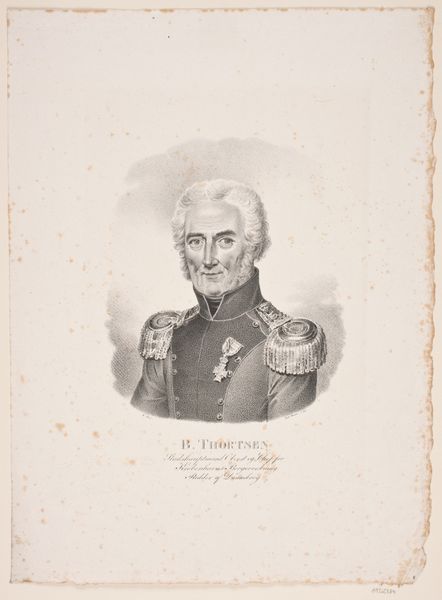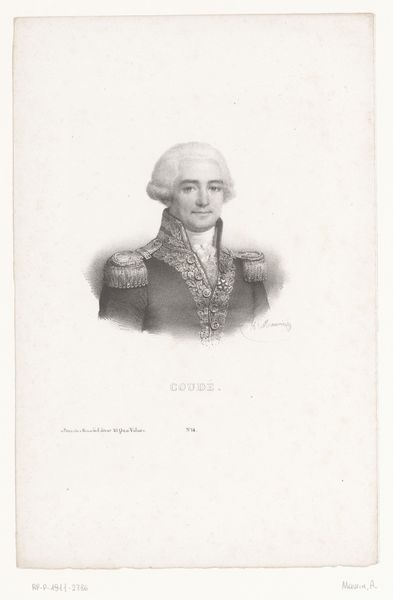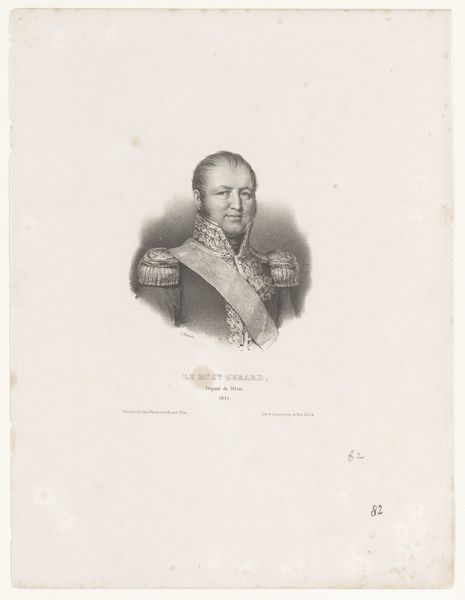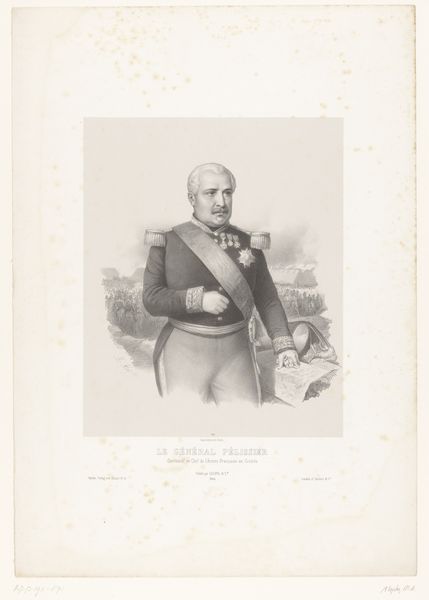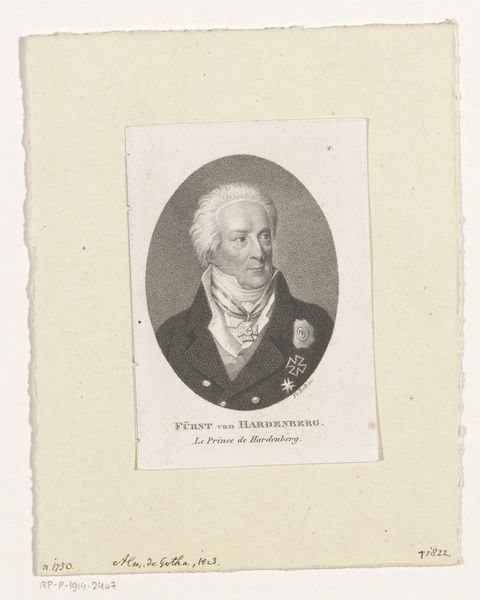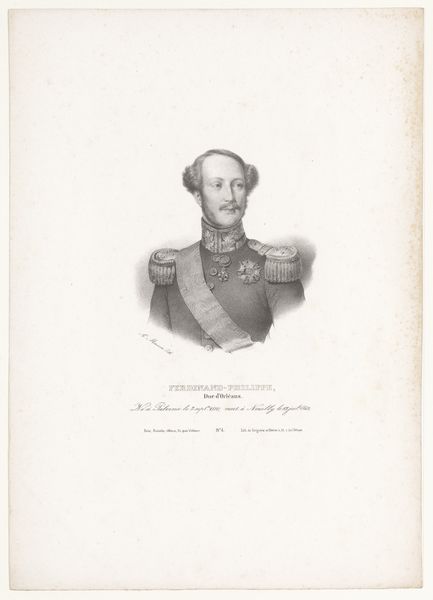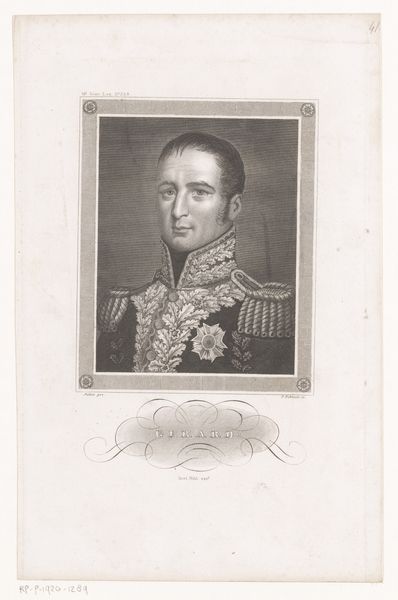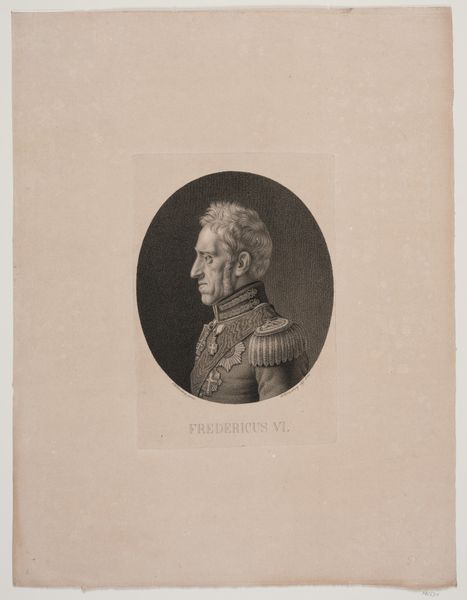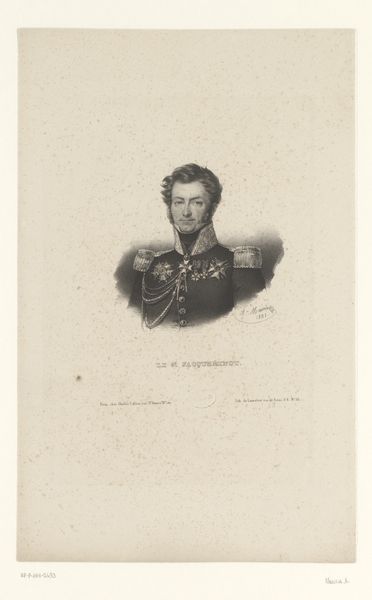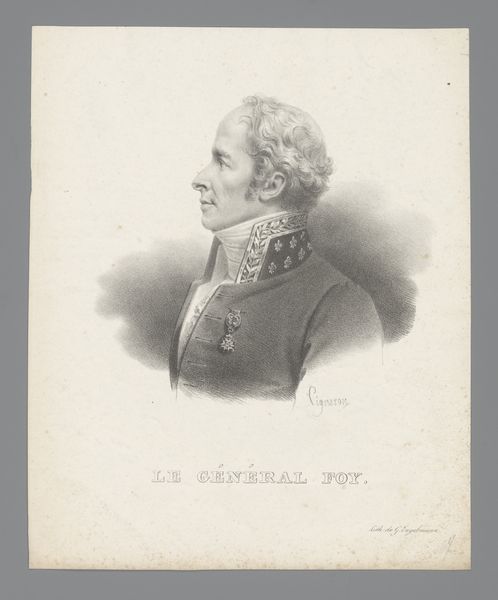
drawing, graphite
#
portrait
#
drawing
#
romanticism
#
graphite
Dimensions: height 249 mm, width 174 mm
Copyright: Rijks Museum: Open Domain
Curator: Antoine Maurin's "Portret van Jean-Baptiste Drouet d'Erlon," a graphite drawing from 1834, hangs before us. What impressions does it stir for you? Editor: It’s interesting…almost a feeling of stoic watchfulness. His gaze is very direct and there is something formal about it – rigid even – softened by the slight asymmetries and imperfections of the drawing, as opposed to a photographic rendering. The shading suggests he's caught between eras. Curator: Ah, "between eras"...tell me more, because my mind is already leaping ahead into seeing him through the prism of Romanticism – the emphasis on emotion, the almost… yearnings it gives to the sitter’s social role. Editor: Precisely! You've articulated part of it beautifully, as if the very visual language can't quite reconcile the old order of military precision with the currents of individualism starting to bubble up. It is also there in the graphite: you get this soft texture, and in particular the hair that seems more natural and almost blowing than one might expect for the rendering of a military hero from an older era. It humanizes him, adding that element of melancholy associated with Romanticism. Curator: Absolutely, it is there too in the soft and even dreamy depiction of his eyes, but his medals, oh! Those symbols pinned to his chest speak of honor, order and status. I wonder if the contrast wasn’t intentional – that tightrope between personal sentiment and very public duty. Drouet d'Erlon was after all a soldier, and Governor of Algeria by the time this portrait was rendered. The weight of the old world is palpable there in that very symbolic decoration. Editor: Fascinating, how symbols operate not just as static markers, but dynamic participants in this dance of meaning! And in his sartorial details we observe these signs. The epaulettes speak to authority and position, but I sense more beyond. Curator: Perhaps a little resignation too – he did serve under Napoleon, then under the restored monarchy of Louis XVIII. How many ideological turns and return did he witness! A tumultuous life perhaps rendered here with a quiet, subtle intensity in humble graphite. It shows the potential within Romanticism to present real characters and real inner worlds rather than stiff and lifeless copies. Editor: A perfect parting sentiment: this drawing offers more than just a face; it encapsulates a world in transition – rendered so beautifully in grayscale and emotion.
Comments
No comments
Be the first to comment and join the conversation on the ultimate creative platform.
